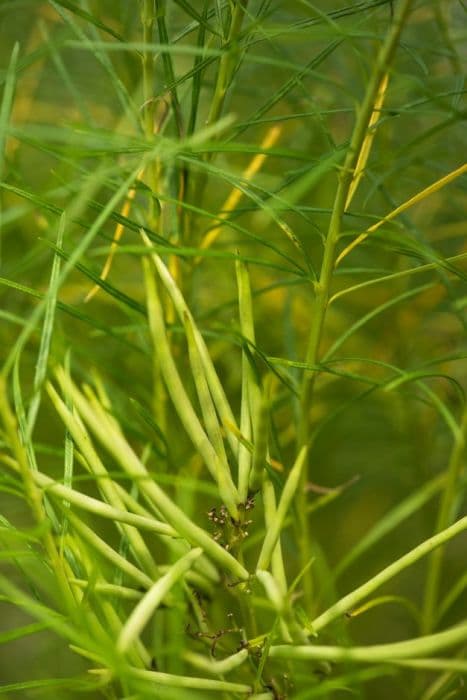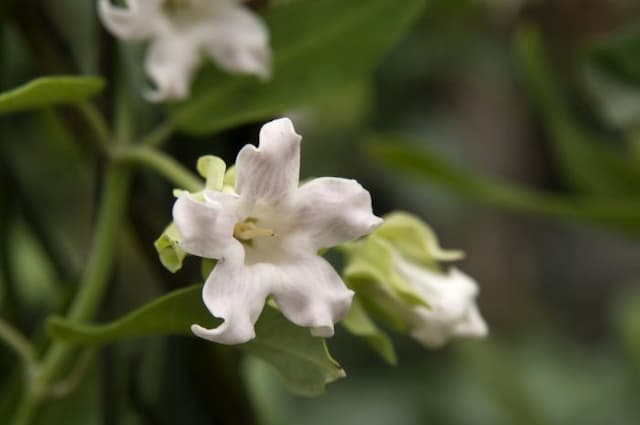Zulu Giant Stapelia gigantea

ABOUT
The plant commonly known as the giant starfish flower or star cactus, is a unique and intriguing species. It is a fleshy, spineless plant with a succulent nature, meaning that it retains water in its thick, green-gray stems, which are angled with slight ridges. These stems typically grow out from the center and may have a slightly rough texture with a mottled pattern that makes them resemble cactus arms, but without the spines. The most striking feature of the plant is its flowers. These blooms are impressively large and star-shaped, boasting a complex structure that appears almost otherworldly. The petals are thick and fleshy, with a vivid, flesh-like coloration ranging from yellow to deep red or brown. The surface of the petals often has hair-like structures and may show intricate mottling or speckling that gives the appearance of decaying matter. These features are not just a visual marvel; they play a crucial role in the plant's survival strategy. The patterning and coloration of the flowers attract specific pollinators that are typically drawn to the scent and appearance of decaying organic material. The blossoms emit a distinctive odor that is often compared to that of rotting meat, which is an adaptation to lure in carrion flies for pollination. Additionally, the center of the flower is quite prominent, often involving a raised, central disk surrounded by the large petals. This disk can be a stark contrast in color, adding to the visual appeal of the star-shaped floral display. In terms of foliage, this plant is quite limited; it lacks traditional leaves, which is a common adaptation among plants from arid environments to reduce water loss. Its stems perform the necessary photosynthesis to sustain the plant. Overall, the appearance is one that can be considered both strikingly beautiful and somewhat alien, fitting for a plant that thrives in tough conditions and attracts pollinators in such an unusual way.
About this plant
 Names
NamesFamily
Apocynaceae.
Synonyms
Zulu Giant, Carrion Plant, Giant Toad Plant, Starfish Flower, Giant Starfish Flower.
Common names
Stapelia nobilis, Stapelia marlothii, Gonostemon giganteus, Gonostemon nobilis.
 Toxicity
ToxicityTo humans
The Starfish Flower is generally not considered toxic to humans. There are no significant reports of poisoning or severe adverse reactions from ingesting or handling this plant. Nonetheless, as with any non-food plant, it is advisable not to ingest parts of the Starfish Flower, as it could potentially cause mild stomach upset if consumed.
To pets
The Starfish Flower is also not known to be toxic to pets. There are no widespread reports of pets being poisoned by this plant. However, it is always prudent to prevent pets from ingesting plants that are not intended for consumption, as they could potentially cause mild gastrointestinal disturbances.
 Characteristics
CharacteristicsLife cycle
Perennials
Foliage type
Evergreen
Color of leaves
Green
Flower color
Yellow
Height
1 feet (0.3 meters
Spread
2 feet (0.6 meters
Plant type
Succulent
Hardiness zones
10
Native area
Africa
Benefits
 General Benefits
General Benefits- Ornamental value: Starfish flower adds unique visual interest to gardens and homes with its large, star-shaped blooms and unusual appearance.
- Drought tolerance: As a succulent, it requires minimal water, making it an excellent choice for xeriscaping and low-maintenance gardens.
- Easy propagation: It can be easily propagated from cuttings, allowing gardeners to quickly and easily expand their collection or share with friends.
- Pest resistant: The plant is relatively resistant to pests, reducing the need for chemical treatments and making it a low-care option for gardeners.
- Adaptability: It can thrive in a variety of soil types as long as they are well-draining, making it versatile for different garden setups.
- Attracts pollinators: Although the plant has an odor that can be off-putting to humans when blooming, it attracts flies and other pollinators, beneficial for the garden ecosystem.
 Medical Properties
Medical PropertiesThis plant is not used for medical purposes.
 Air-purifying Qualities
Air-purifying QualitiesThis plant is not specifically known for air purifying qualities.
 Other Uses
Other Uses- Stapelia gigantea, commonly known as Starfish Flower, can be used as a conversation piece in gardens due to its large, unusual flowers that resemble starfish and have a unique, often unpleasant odor.
- The plant's ability to attract pollinators such as flies can be utilized in educational settings to demonstrate mimicry and pollination strategies in plants.
- In horticulture, Starfish Flower can be grafted onto other succulents to create interesting and unusual plant combinations for collectors and enthusiasts.
- Due to its odd appearance and smell, Starfish Flower is often used in themed garden displays, including Halloween decorations and “gothic” garden themes.
- The plant can be used as a natural pest control strategy, as the smell it emits may deter certain pests from the garden area.
- Starfish Flower can function as a specimen plant in xeriscaping, useful in regions with water restrictions or drought conditions because of its low water requirements.
- Photographers and artists may find the Starfish Flower a compelling subject for their work due to its striking and unique aesthetic.
- Cultivation of Starfish Flower can be an educational tool in botanical and horticultural studies, showcasing how succulents adapt to arid environments.
- The plant is sometimes used in science projects and experiments to study decomposition and the life cycle of flies and other insects attracted by its carrion-like scent.
- Starfish Flower can be used as a boundary plant in gardens, its sturdy structure and imposing blooms creating a visual barrier.
Interesting Facts
 Feng Shui
Feng ShuiThe Starfish Plant is not used in Feng Shui practice.
 Zodiac Sign Compitability
Zodiac Sign CompitabilityThe Starfish Plant is not used in astrology practice.
 Plant Symbolism
Plant Symbolism- Deception: The Starfish Flower is known for its foul smell, which deceives insects into pollinating it by mimicking the scent of rotting flesh.
- Resilience: As a succulent, the Starfish Flower is adept at surviving in harsh, arid environments, symbolizing the ability to endure difficult conditions.
- Uniqueness: With its unusual appearance and large, star-shaped flowers, the Starfish Flower represents the beauty found in what is unconventional or unique.
- Protection: The Starfish Flower's tough, fleshy exterior symbolizes a strong protective barrier, suggesting an ability to guard oneself against harsh external forces.
- Attraction and repulsion: The plant's striking visuals can attract onlookers, while its odor repels, symbolizing a dichotomy of allure and offense in nature or personalities.
 Water
WaterThe Starfish Flower, or Carrion Plant, prefers its soil to be kept relatively dry, so it's important to water sparingly. Usually, watering once every week or two with about 8 to 16 ounces of water per session should suffice, depending on the size of the pot and the plant. Allow the soil to completely dry out between waterings. During winter, reduce watering to once a month or less as the plant enters a resting phase.
 Light
LightThe Carrion Plant thrives in bright, indirect light conditions. It can tolerate some direct sunlight, but it's best to provide a spot where it will receive filtered sunlight for most of the day to prevent scorching of its succulent leaves.
 Temperature
TemperatureThe Carrion Plant's ideal temperature range is between 70 and 90 degrees Fahrenheit. It can survive temporary drops down to about 50 degrees at night but should not be exposed to temperatures below 40 degrees, as this can damage the plant.
 Pruning
PruningPruning of the Carrion Plant is generally not necessary unless you want to remove dead or damaged stems to maintain its appearance. The best time to prune is immediately after flowering when the plant is entering its growth phase.
 Cleaning
CleaningAs needed
 Soil
SoilThe Starfish Flower thrives in a well-draining soil mix, such as a cactus or succulent mix, with added perlite or pumice for aeration. A suitable recipe includes one part potting soil, one part sand, and one part perlite. The ideal soil pH for Starfish Flower should be slightly acidic to neutral, ranging from 6.0 to 7.5.
 Repotting
RepottingThe Starfish Flower should be repotted every 2 to 3 years or when it has outgrown its pot. The best time to repot is during the warmer months when the plant is actively growing.
 Humidity & Misting
Humidity & MistingStarfish Flowers prefer moderate to low humidity levels, typical of arid environments, and do well in the average household humidity. Avoid high humidity conditions to prevent rot and fungal diseases.
 Suitable locations
Suitable locationsIndoor
Provide bright light, avoid overwatering, and ensure pot has drainage.
Outdoor
Plant in bright shade, protect from frost, and use well-draining soil.
Hardiness zone
9-11 USDA
 Life cycle
Life cycleStapelia gigantea, commonly known as Giant Starfish Flower, begins its life cycle when seeds germinate in warm, well-drained soil; germination is typically sporadic and may occur over an extended period. Seedlings grow into fleshy, spineless, succulent stems that are predominantly four-angled and can reach up to eight inches in length. The plant's vegetative growth phase involves the expansion of these stems and occasionally the formation of clumps or mats as segments root at the base. During the flowering stage, typically in the late summer or fall, the Giant Starfish Flower produces large, star-shaped flowers that can be up to 14 inches across, exuding a strong odor reminiscent of decaying flesh to attract pollinators such as flies. After successful pollination, the starfish-shaped flowers develop into seed pods that eventually dry and open to release the small, light seeds, which are disseminated by wind. The plant may also propagate vegetatively through stem cuttings that root easily, enabling new clonal plants to start their own life cycle.
 Propogation
PropogationPropogation time
Spring to Summer
The most popular method for propagating Starfish Flower, or Stapelia gigantea, is through stem cuttings. This process is best carried out in late spring or early summer when the plant is actively growing. To propagate, you should choose a healthy stem and slice it off with a clean, sharp knife or pair of scissors, making sure the cutting is about 3 to 5 inches long (8 to 13 centimeters). Allow the cutting to dry and callous over for a couple of days to reduce the risk of rot when planted. Then, insert the calloused end into a well-draining succulent or cactus potting mix. Water sparingly just to dampen the soil, and place the pot in a warm environment with indirect sunlight. Roots should begin to form within a few weeks, after which watering can be gradually increased as the plant establishes itself.









